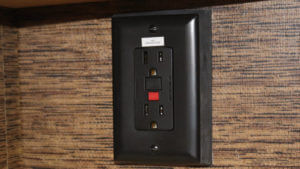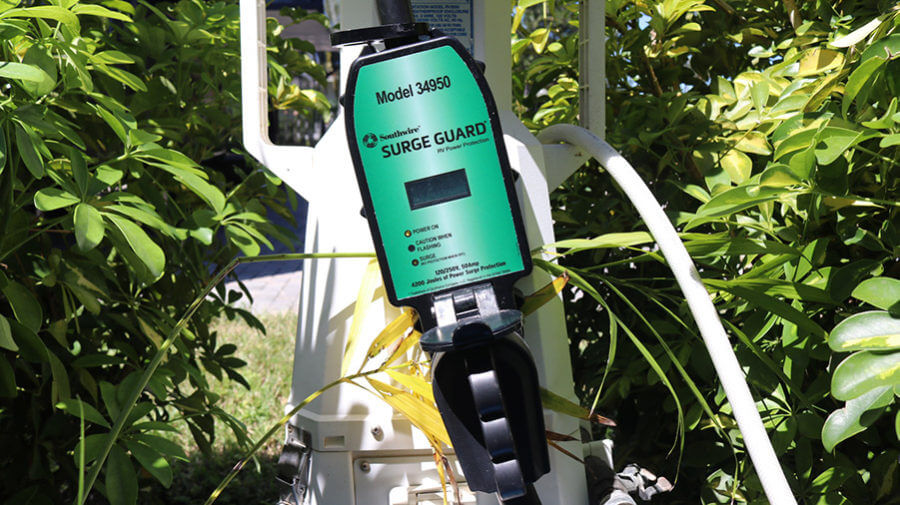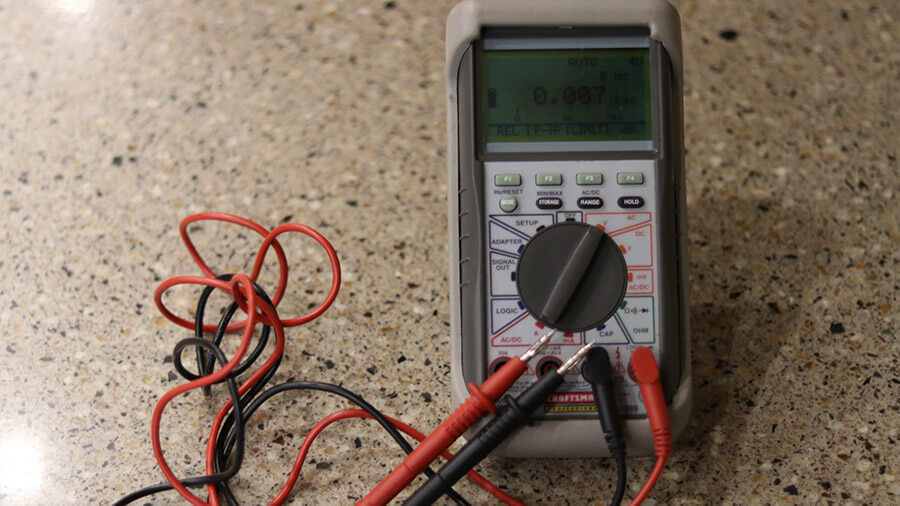Last week I talked with a friend of mine who was prepping his Motorhome for traveling this fall. He plugged into the shore power pedestal and was not able to get power to the coach. I know that a lot of us experience this from time to time, so I thought I would write a post to cover the things that can go wrong with the connection to shore power.
Why is my RV not getting shore power? 6 Ways to Fix it!
There are many reasons that your RV shore power connection may not work, from a breaker that needs to be reset to a bad inverter. Here’s a list of 6 of the most common reasons that you don’t have power when you plug in your RV and how to fix them:
Be sure to exercise caution when dealing with your RV power systems! Electricity can be dangerous and you may need to consult a licensed RV electrician for help.
By the way, as an Amazon Associate, I earn when buying qualified products through links on my site.
Here’s some other troubleshooting tips if you’d like some more ideas
1. Electrical Breaker on the pedestal is not closed
Don’t laugh, some pedestals may not have an obvious breaker switch. Normally the breaker switch is under a cover where you plug in your electric cord, but it may be hiding somewhere else on the pedestal.
Even if the breaker switch seems to be closed properly, it is always worthwhile to go back to the pedestal and switch it off and on again.
2. Check your Ground Fault Circuit Interrupter (GFCI) outlets
This one is not as obvious and has caused me a headache from time to time. The GFCI outlets are normally installed in areas with moisture, like bathrooms or kitchens and have a Test and a Reset button built into the center of the outlet.

On my Tiffin Open Road, I had a GFCI in the Wet Bay that would not allow power to the coach when it was tripped. That was a fun one to find!
In our Newmar, we have a GFCI in the kitchen that when it is tripped causes some weird things to lose power. I once had a lightning strike that caused my GFCIs and other things to trip, which caused a partial loss of power. That resulted in some frustrating troubleshooting and finally a call to Newmar!
Check your RV manual to find out where all of your GFCI’s are located and hit the Reset button on them.
3. Check for power from your RV surge protector
If you have a surge protector on your RV (which every RV should have even if you need to add it yourself), try checking the indicator that shows power is allowed to the motorhome.
My surge protector prevents me from powering our RV when it senses conditions that are not safe for the coach’s systems. Things like reverse polarity, open ground and neutral, low and high voltages, and more. There are plenty of horror stories out there about incorrectly wired pedestals that have caused very expensive damage to many RVs.
Get familiar with your operating manual for your RV surge protector (which is a MUST HAVE item for your coach). Check to make sure your surge protector is working properly. If there was a power surge that you were not aware of, your RV surge protector could be damaged and blocking power to your coach.

4. Check your Generator breaker
I know this sounds odd, but after the lightning strike that I mentioned previously, even after I found all the tripped GFCIs, my power to the coach was still not working right.
I finally had to call Newmar for some tech support, and they had me reset the Generator breaker. It didn’t look tripped, but as soon as I opened it and re-closed it, everything worked fine. Weird.
By the way, that generator breaker is on the generator enclosure, inside the generator bay. Mine was right next to the hour meter on the Cummins/ Onan.
By the way, that generator breaker is on the generator enclosure, inside the generator bay. Mine was right next to the hour meter on the Cummins/ Onan.
5. Check your RV power cord
This troubleshooting step can be done visually or with a multimeter. Before breaking out the multimeter, look at some of the obvious things on the cord. You want to do this with the power switch off at the pedestal.
Check the power cord for obvious signs of wear. Are there any cuts on the outer casing? That could be a sign that one of the wires inside the casing is damaged. Check the electrical plug. Does it feel loose? Have you noticed the plug getting hot? Unplug it and check the connectors, do they look corroded?
When I unplugged my RV recently, I noticed that the plug was getting seriously hot to the touch. I knew something was going on with it, but because it was a single piece connector there was no way to check the wires inside. When I unplugged the connector from the pedestal, one side of the connector just broke off! So, it was definitely time to change it.
I bought a replacement male connector for my electric cable, cut off the old one and spliced on the new plug. Ever since then, my power plug stays cool, and it reduced our electricity bill by being more efficient in feeding power to the coach.
6. Check your RV transfer switch
If you are comfortable using a multimeter, you can check for continuity through the wires to the electrical transfer switch. If you are not knowledgeable about electrical circuits, you probably want to have a licensed electrician look at it.
Speaking of the transfer switch, you could have a faulted switch. Start your generator and see if you get power to the coach from the generator. If you do and you know everything is good from the pedestal, then you could have a bad transfer switch.

I hope some of these tips help you in determining the cause of your power issue. Again, this is not meant to be a complete guide to what is possible, but some of the more common and easiest to check. If it is not something from the list, it is probably best to seek the help of a licensed RV electrician.
Related questions people also ask
Does my RV House battery charge while driving?
Yes. Both the chassis battery and the coach battery will charge while underway. Charging power is provided by the RV’s engine alternator.
Can I run my 50 amp RV on 30 amp power?
Yes. With the use of a “dogbone” adapter for your 50 amp power cord, you can plug directly into a 30 amp power plug. You will be able to run most of your RV house loads and maybe one of your air conditioning units.
